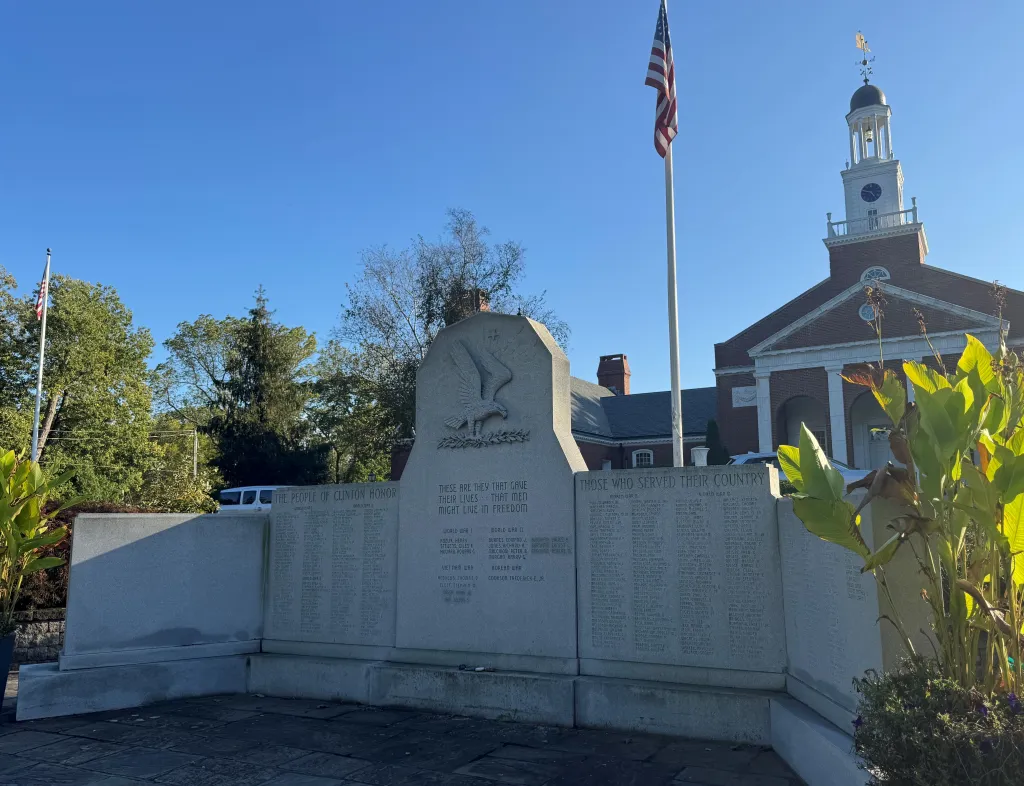
It took 16 years for Robert Dwyer to discover, much to his dismay, that his late father’s name was never engraved on a Connecticut town’s war memorial as a World War II veteran.
The 70-year-old Maryland resident is now laser focused on convincing the town of Clinton to honor his father’s legacy by adding the dad’s name to the memorial. His father died in 1995 at the age of 75.
“I am simply trying to fulfill his wish,” said. Dwyer. “A very small gesture on my part hoping to show how much I appreciated all he did for me and the rest of the family.”
The problem, according to the VFW All-American Post 66, which oversees determining eligibility for the memorial, is that the elder and now late Robert Dwyer’s family owned property there but he was not a resident of Clinton when he enlisted in the U.S. Army.
“The rule that Clinton uses is that a veteran who applies for addition to our monument must have come and lived in Clinton at the time he or she entered the service,” said Philip Sengle, past commander, American Legion CT Post 66 in Clinton, who oversees requests.
Proof of this has to be reflect in the DD-214, the official discharge document that contains all the details of a veteran’s service record, and is completed by enlisted personnel and includes their official residence.
This is noted in Box 9 of the document, “Permanent Address for Mailing Purposes.”
In the elder Robert Dwyer’s case, this is listed as Hartford.
The original name for this document was the Enlisted Record and Report of Separation.
The younger Robert Dwyer said he understands this but contends that since the family owned property and paid local taxes for a home on Blake Avenue in Clinton from 1930 to 2007, his father should be considered a Clinton resident and his name added to the monument.
“He never mentioned anything about a war memorial in Hartford, only Clinton,” he said. “He loved Clinton.”
A compounding problem is that Hartford does not have a memorial to honor WWII veterans, he said.
A story about the history of the city’s WWII honor rolls was published in the Hartford Courant on Sunday, Nov. 1, 2009.
In 1941, then Mayor Thomas Spellacy asked residents “to gather the names of all men and women from their neighborhoods serving in World War II” and “design an honor roll to those serving,” according to the story.
These honor rolls were erected in six neighborhoods, in addition to one on the east lawn of the Old State House.
“Each had a different design, and, because of shortage of funds and supplies due to the war, most were made of materials that would no be long-lasting,” the article continued.
“By 1955, only two of the honor rolls remained intact and in place,” according to the article. “Now none of the original Honor Rolls still stand.”
Dwyer cites a letter, dated July 25, 2008, from then Clinton First selectman William W. Fritz, which read “Please add Robert T. Dwyer’s name to the Veterans Monument. Enclosed is proper documentation,” as proof that the request was approved.
The letter was sent to John Neri, then commander of the local VFW, and Cc’d to the younger Robert Dwyer.
The proper documentation, according to Dwyer, was a death certificate and DD-214.
Michelle Benivenga, now Clinton town manager, addressed this decision by Fritz.
“He had no business sending it to them, nor does he know what he was looking at,” she said, referring to Fritz.
Benivenga said the town relies on the American Legion to determine eligibility.
“The only part of this that the town has any responsibility for is hiring an engraver to put the name on the wall,” she said. “That is it.”
The names are added to the monument in batches and once the town has at least three to four requests, the engraver is hired to add them to the wall. Currently there are no names on that list, according to Benivenga.
The Barre granite monument was built in 1946 by the Fox-Becker Granite Co. of Middletown, according to ctinworldwar1.org.
It honors veterans from the Colonial War, Revolutionary War, War of 1812, Civil War, Korean War, Vietnam, World War I and World War II.
“I assumed it had been done,” said Dwyer. “I didn’t have a chance to get up there and see. Life goes on, the kids are growing up. My daughter was on a travel soccer team so we were going all over the country with that and I had to keep my job and do my job. Just life in general.”
In addition, Dwyer is now bedridden, unable to walk due to a congenital degenerative back condition.
He never thought about the issue until this past spring when he contacted the town hall and asked for a photo of the monument so he would see his father’s name.
It was at this time he was notified that his father’s name was not on the monument.
Since then, he has been in correspondence with Sengle, Benivenga and Monica Larsen, Town Hall receptionist.
Sengle said when he began corresponding with Dwyer he researched the request a bit farther, looking into the possibility that the veteran graduated from The Morgan School.
“I didn’t have to do that that, but I just did that on my own accord,” he said. “I thought, well if he graduated from our school his case is a little stronger.”
Dwyer attended St. John’s Prep, a boarding school in Massachusetts, prior to attending Syracuse University for a time before going off to the U.S. Army.
Sengle is sympathetic to Dwyer’s plight.
“Without saying it, I was kind of implying, ‘I feel your pain’ and I do,” he said, referring to correspondence between the two men.
The American Legion has to follow their rules, he added.
“Just because there’s no monument in his address of record, doesn’t mean we’re the default based on circumstances,” he said. “It’s a slippery slope and once you start making exceptions and that sort of things, what do you do with the next case, which will be a little different and the next case after that.”
Sengle said he was patient throughout his correspondence with Dwyer, until one of his last emails.
“I said, ‘It’s not up to me to prove he wasn’t here, it’s frankly up to you to prove he was here,” said Sengle. “Anyone who is applying to get on the monument has to prove that they qualify.”
“I told him repeatedly, the qualification is what’s in Box 9 on the DD-214 and a couple other boxes,” he said.
In an email Dwyer wrote, he said, “I would love to see these guidelines in print” and a “letter from Monica mentions American Legion has database of memorials they oversee. The Clinton Memorial is NOT listed.”
He is disappointed in the process.
“What they’re saying is one thing, but what they’re doing is different,” said Dwyer.
“The whole thing, ‘We’re here for the veterans, but not in this case. We just can’t allow that to happen,’” he said.
Benivenga counters this.
“If they alter the way that they decide if someone goes on that wall, they’re altering the integrity of the process and it is a standard across the country to use the DD-214,” she said.



